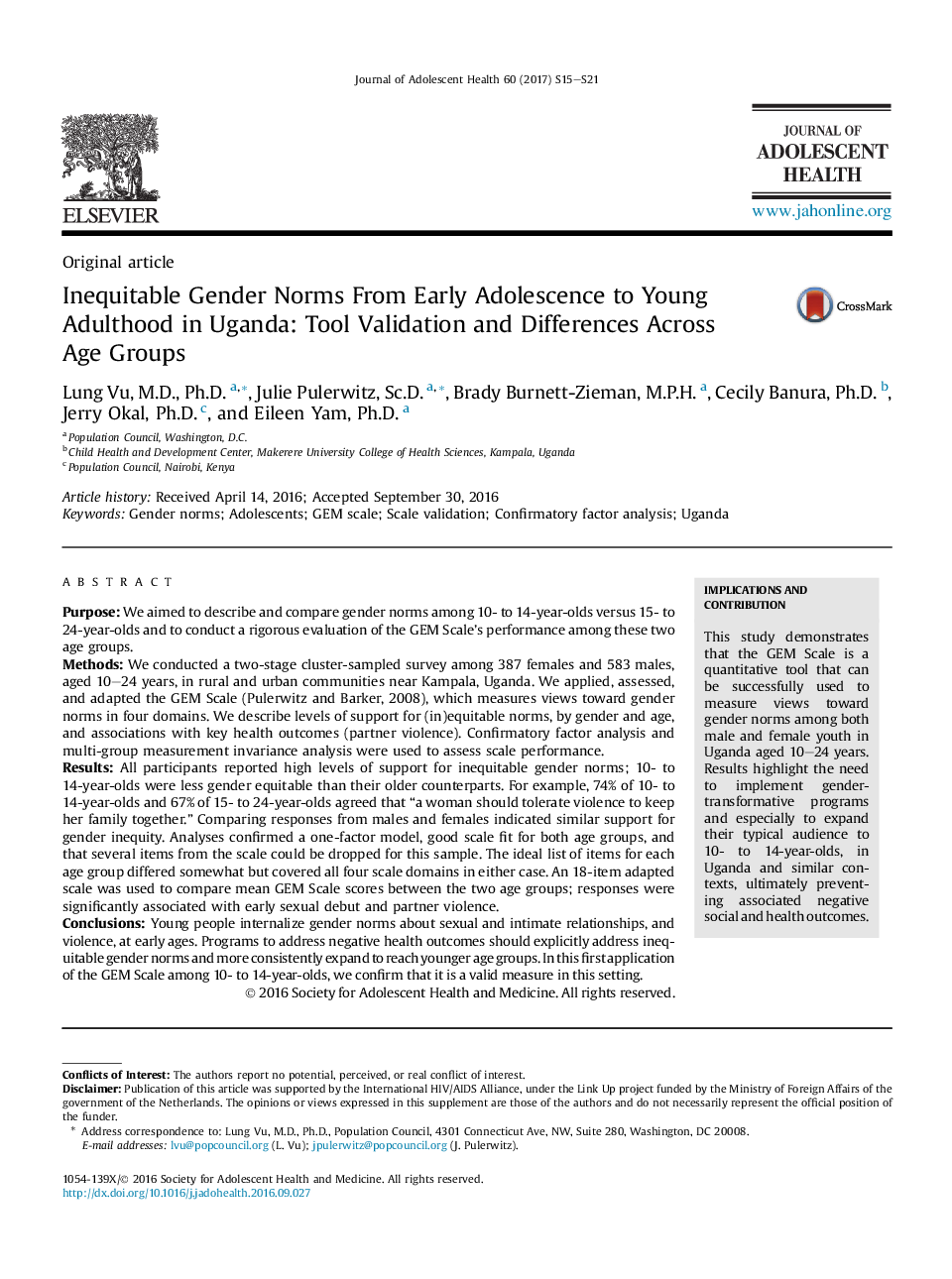| کد مقاله | کد نشریه | سال انتشار | مقاله انگلیسی | نسخه تمام متن |
|---|---|---|---|---|
| 5121338 | 1378296 | 2017 | 7 صفحه PDF | دانلود رایگان |
PurposeWe aimed to describe and compare gender norms among 10- to 14-year-olds versus 15- to 24-year-olds and to conduct a rigorous evaluation of the GEM Scale's performance among these two age groups.MethodsWe conducted a two-stage cluster-sampled survey among 387 females and 583 males, aged 10-24 years, in rural and urban communities near Kampala, Uganda. We applied, assessed, and adapted the GEM Scale (Pulerwitz and Barker, 2008), which measures views toward gender norms in four domains. We describe levels of support for (in)equitable norms, by gender and age, and associations with key health outcomes (partner violence). Confirmatory factor analysis and multi-group measurement invariance analysis were used to assess scale performance.ResultsAll participants reported high levels of support for inequitable gender norms; 10- to 14-year-olds were less gender equitable than their older counterparts. For example, 74% of 10- to 14-year-olds and 67% of 15- to 24-year-olds agreed that “a woman should tolerate violence to keep her family together.” Comparing responses from males and females indicated similar support for gender inequity. Analyses confirmed a one-factor model, good scale fit for both age groups, and that several items from the scale could be dropped for this sample. The ideal list of items for each age group differed somewhat but covered all four scale domains in either case. An 18-item adapted scale was used to compare mean GEM Scale scores between the two age groups; responses were significantly associated with early sexual debut and partner violence.ConclusionsYoung people internalize gender norms about sexual and intimate relationships, and violence, at early ages. Programs to address negative health outcomes should explicitly address inequitable gender norms and more consistently expand to reach younger age groups. In this first application of the GEM Scale among 10- to 14-year-olds, we confirm that it is a valid measure in this setting.
Journal: Journal of Adolescent Health - Volume 60, Issue 2, Supplement 2, February 2017, Pages S15-S21
